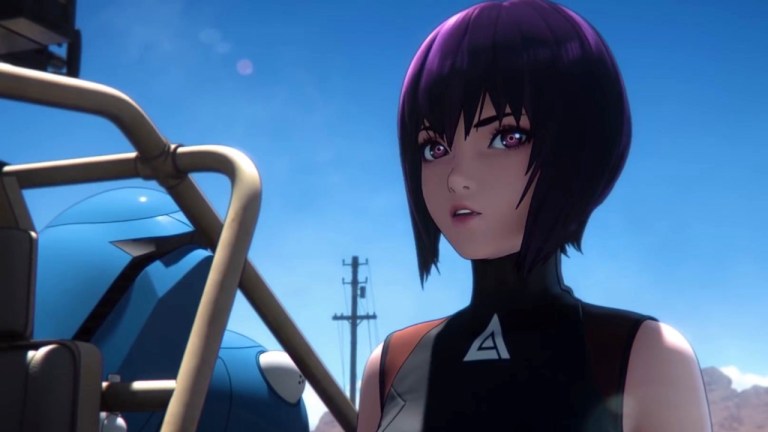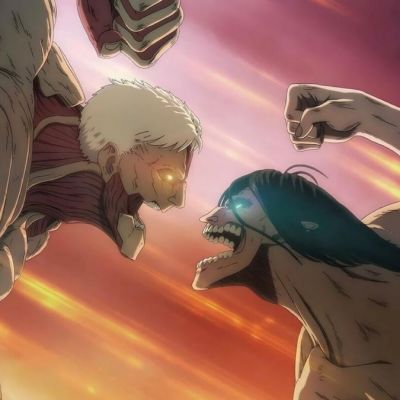Ghost in the Shell: SAC_2045 Ending Explained
The latest entry in the Ghost in the Shell canon introduces many complex concepts, all of which raise interesting questions for season two.

The following contains spoilers for Ghost in the Shell: SAC_2045.
Netflix’s new Ghost in the Shell: SAC_2045 is the latest addition to Japan’s popular Ghost in the Shell series. For decades Ghost in the Shell has provided thought-provoking and creative looks into topics like artificial intelligence and the dangerous advancement of technology. It’s one of the more acclaimed cyberpunk anime that are out there and the series’ Major Motoko Kusanagi has turned into a figurehead for the genre. This new anime continues the series’ exploration into society’s gradual subjugation by technology and Section 9’s efforts to fight off and prevent these new advanced threats.
Ghost in the Shell: SAC_2045 has Kusanagi and her team face their biggest challenge yet as the world heads closer to singularity and artificial intelligence reigning supreme. The prevalence of “post-humans” and other invasive forms of technology push Section 9 to act fast or else the government may be taken down and the world gets even further away from healing. There are a lot of fires to extinguish in this season of SAC_2045, which means it’s easy to get lost in this technological madness and miss some of the finer details of the finale.
What Are Post-Humans?
Ghost in the Shell: SAC_2045 plays around with a lot of new dangers that plague the world in the fifteen years that have elapsed since the last Standalone Complex series. An event known as the Global Simultaneous Default has led to an alarming advancement of technology and artificial intelligence that’s essentially the singularity. The most dangerous effect of all of this are “post-humans,” who become the predominant threat that Section 9 faces in SAC_2045. Post-humans operate with a level of precision and power that even makes fully synthetic robots look meek in comparison. They’re the ultimate killing machines.
The origins of these post-humans is initially unclear, but Section 9 slowly learns that this process is the result of an invasive level of hacking and infection. Unwilling humans are essentially programmed into sleeper assassins who are being used to take out important individuals in the government. Section 9 is able to take out a couple of these post-humans, but there are at least 14 of them that they know about that they need to locate and eliminate.
What Is Think Pol?
The final episodes of Ghost in the Shell: SAC_2045’s first season revolve around a new dangerous piece of software that’s known as Think Pol. Think Pol—and the extension software that grew out of it, Peep Hole—are a form of spying and surveillance app that began with the altruistic intentions of exposing individuals who have done wrong. Think Pol is created by Takashi Shimamura and its name is a reference to Thought Police and a greater Orwellian influence of preventing crime before it’s able to happen. Shimamura wants to do good with Think Pol, but the software is quickly manipulated and used as a tool to enact mob mentality. This makes it a major priority for Section 9 during their post-human hunt.
Why Does Togusa Experience Shimamura’s Past?
Togusa becomes a major player in the finale of SAC_2045 due to how he interacts with and attempts to decode and retrieve data from the software that Takashi Shimamura has left behind. It turns out that the software is encoded with a dangerous virus that tries to infect and take over Togusa’s brain when he attempts to analyze the data. Section 9 discovers that Shimamura’s software was designed to recover an important memory of his that was lost. However, further research reveals that the software isn’t just meant to retrieve lost memories, but to specifically conjure up nostalgia over a lost person or moment of time. Togusa survives the attempted infection, but due to his exposure with the software he also finds himself subject to Shimamura’s nostalgia. He’s stuck living through his past as he attempts to determine what’s important about this repressed memory.
What Is Takashi Shimamura’s Lost Memory?
The important lost memory that Takashi Shimamura has repressed and is so eager to retrieve charts back to his original creation of Think Pol (which at the time he refers to as a “game”). During this time from his youth he was living with his younger cousin Yuzu and her family. The two of them are largely left to their own devices and they learn about an airborne trooper who’s landed near their home and taken up refuge there. Shimamura’s curiosity gets the better of him and he spies on some corrupt government officials carrying out war crime executions. Yuzu eventually gets discovered and when the two kids are nearly executed for being loose ends, the airborne trooper shows up and saves them.
Many deaths ensue and both Takashi and Yuzu are traumatized by the vicious murders that they see. Tragically, stray fire happens to take out Yuzu and this devastating experience sets Takashi on the path to carry out 1984’s message, avenge his relative, and change the world. He leaves with the airborne trooper, abandons his roots, and sets on a new path.
What Is The Significance Of Orwell’s 1984?
George Orwell’s 1984 becomes a crucial text in SAC_2045, particularly in regard to Takashi Shimamura’s inspiration for creating Think Pol in the first place. Shimamura first encounters Orwell’s 1984 when he investigates the house of the airborne trooper. Shimamura later tries to return the book, but gets caught by the trooper. Rather than punish Takashi, the trooper lets him keep the book and reiterates its message about how it’s hard to live in a place when you can’t abide by its unfair rules. He tells the young boy to read the book to learn “everything that will happen in the world.” This brief moment for Shimamura turns into a formative experience about not just trying to buck the system, but how he inadvertently creates the oppressive structure that he’s adamant to prevent from happening in the first place.
Where Does Togusa Disappear To?
The concluding moments of the first season of SAC_2045 go out on a rather surprising cliffhanger will surely inform much of the start of season two. Togusa continues to experience the nostalgia of Takashi Shimamura’s memories, but when the repressed secret of Shimamura’s childhood comes to a head, the present and the past meld together in a mysterious way. At the end of Shimamura’s memory when the airborne trooper asks him to accompany him on his journey, Shimamura extends the same courtesy to Togusa. Up until this point Shimamura’s memories haven’t explicitly interacted with Togusa and he’s just been a silent bystander.
Togusa appears to accept Shimamura’s offer because he disappears with him and vanishes away into the past. Togusa’s sudden disappearance throws Batou for a loop and it may be very difficult to recover him. Perhaps it’s possible for Togusa to get back to the present on his own, or maybe Motoko will need to also interact with the software and invade Shimamura’s memories in a similar way to help retrieve her lost friend.
Do Section 9 Succeed In Stopping The Post-Humans?
The final episode of Ghost in the Shell: SAC_2045’s first season takes a bit of a step back from the larger post-human threat and instead focuses on the disappearance of Takashi Shimamura and the importance of his technology and how it works. Granted, fully understanding Shimamura’s secret and the intricacies of Think Pol will help in the grander mission to eliminate post-humans, but Section 9 is still far away from that point. If anything, the team is further behind than ever after Togusa disappears into Takashi Shimamura’s memories. Not only are Section 9 still left with Think Pol work to decode, but the remaining post-humans are still at large. It’s clear that the second season of SAC_2045 will continue to deal with this advanced threat, rather than introduce an entirely new story for the next collection of episodes. Post-humans have turned out to be such a satisfying group of antagonists for Motoko and company that hopefully the show’s second season will find even more creative ways to use them.

